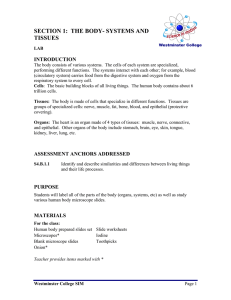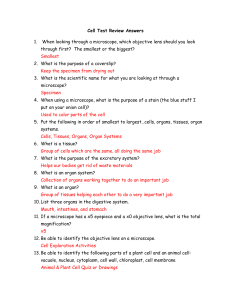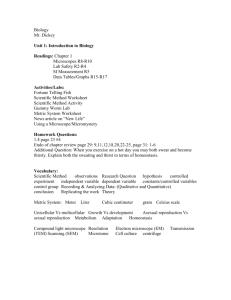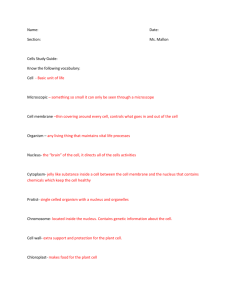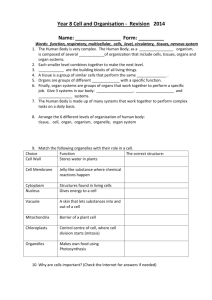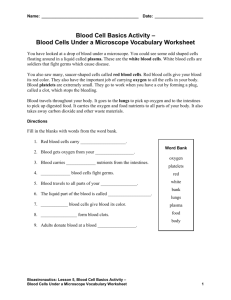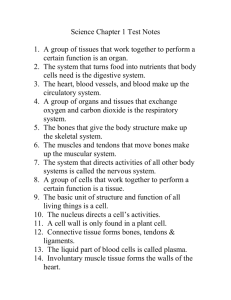Plant Cell Structure Lab
advertisement
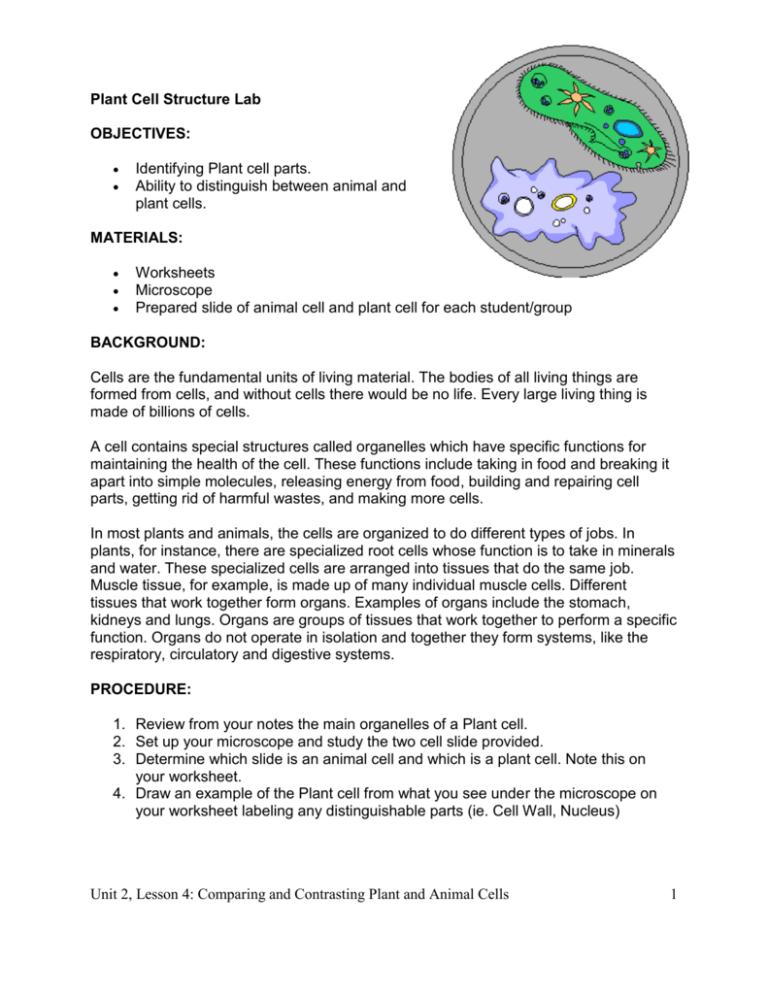
Plant Cell Structure Lab OBJECTIVES: Identifying Plant cell parts. Ability to distinguish between animal and plant cells. MATERIALS: Worksheets Microscope Prepared slide of animal cell and plant cell for each student/group BACKGROUND: Cells are the fundamental units of living material. The bodies of all living things are formed from cells, and without cells there would be no life. Every large living thing is made of billions of cells. A cell contains special structures called organelles which have specific functions for maintaining the health of the cell. These functions include taking in food and breaking it apart into simple molecules, releasing energy from food, building and repairing cell parts, getting rid of harmful wastes, and making more cells. In most plants and animals, the cells are organized to do different types of jobs. In plants, for instance, there are specialized root cells whose function is to take in minerals and water. These specialized cells are arranged into tissues that do the same job. Muscle tissue, for example, is made up of many individual muscle cells. Different tissues that work together form organs. Examples of organs include the stomach, kidneys and lungs. Organs are groups of tissues that work together to perform a specific function. Organs do not operate in isolation and together they form systems, like the respiratory, circulatory and digestive systems. PROCEDURE: 1. Review from your notes the main organelles of a Plant cell. 2. Set up your microscope and study the two cell slide provided. 3. Determine which slide is an animal cell and which is a plant cell. Note this on your worksheet. 4. Draw an example of the Plant cell from what you see under the microscope on your worksheet labeling any distinguishable parts (ie. Cell Wall, Nucleus) Unit 2, Lesson 4: Comparing and Contrasting Plant and Animal Cells 1 Plant Cell Structure Lab Worksheet Name: 1. Which slide contained the plant cell? Date: A B 2. How were you able to distinguish the difference? 3. Draw an example of the plant cell you see under the microscope, and label as many parts as you can distinguish. Unit 2, Lesson 4: Comparing and Contrasting Plant and Animal Cells 2
